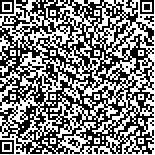| 引用本文: | 邵全琴,马巍巍,陈卓奇,游智敏,王文宇.西北太平洋黑潮路径变化与柔鱼CPUE的关系研究.海洋与湖沼,2005,36(2):111-122. |
| |
|
| |
|
|
| 本文已被:浏览 2100次 下载 1846次 |

码上扫一扫! |
|
|
| 西北太平洋黑潮路径变化与柔鱼CPUE的关系研究 |
|
邵全琴, 马巍巍, 陈卓奇, 游智敏, 王文宇
|
|
中国科学院地理科学与资源研究所 北京100101
|
|
| 摘要: |
| 利用西北太平洋长时间序列SST、黑潮路径、柔鱼渔获量数据,基于GIS技术分析了黑潮路径类型变化和离岸摆动及其对柔鱼CPUE的影响。分析结果表明,1990-2003年,黑潮弯曲发生的月份数占82%,其中整月发生弯曲的月份数占47%,共发生2次大弯曲、2次准弯曲、5次小弯曲。柔鱼年CPUE,在黑潮发生准弯曲年份最高,黑潮发生小弯曲年份较高,黑潮发生大弯曲年份和平直年份较低,黑潮大弯曲发生的强盛年份最低。柔鱼月CPUE高值时段,多是黑潮发生弯曲时段,且主要是C型弯曲。连续 3月以上出现月CPUE高值段,黑潮路径模式是C型弯曲和平直路径交替出现。3天CPUE的高值时段,黑潮弯曲型的频次远高于平直型;较高值时段,黑潮弯曲型的频次稍高于平直型;中值时段,黑潮平直型频次稍高于弯曲型;较低值时段,黑潮平直型高于弯曲型;低值时段,黑潮平直型远高于弯曲型。 |
| 关键词: 西北太平洋 柔鱼 黑潮路径 CPUE |
| DOI: |
| 分类号: |
| 基金项目:中国科学院地理科学与资源研究所知识创新工程资助项目,CX10G-D00-10号;国家 863计划资助项目,863-818-11-03号;上海水产大学重点学科建设开放基金资助项目 |
附件 |
|
| RELATIONSHIP BETWEEN KUROSHIO MEANDER PATTERN AND OMMASTREPHES BARTRAMI CPUE IN NORTHWEST PACIFIC OCEAN |
|
SHAO Quan-Qin, MA Wei-Wei, CHEN Zhuo-Qi, YOU Zhi-Min, WANG Wen-Yu
|
|
Institute of Geographical Sciences and Natural Resources Research, Chinese Academy of Sciences,Beijing, 100101
|
| Abstract: |
| The data used in this paper include daily catches of Ommastrephes bartrami during 1995 to 2002 by Chinese fishing boats, SST isoline charts from 1991 to 2001 issued by Japan Fisher Information Service Center in the interval of every 3 days, the Kuroshio path charts and temperature isoline charts on 0m, 100m, 200m depths from 1998 to 2003 issued by Japan Coast Guard in 15-day span. All data were processed using software ArcGIS, SPSS, and SQL Server.
To overlay digital SST isoline with topology and normal Kuroshio path line, the data of Kuroshio path variation from 1990 to 2001 in 3-day-span were obtained, and results were validated by comparing to the Kuroshio path charts. The Kuroshio path at 15-day-interval is coincident with the 3-day-interval path in the last same period.
During the period of 1990 to 2001, Kuroshio bended in different scale and pattern, those noticed were: two large bendings in 1990–1991 and 1999–2001, two, quasi-bendings in January to October 1997 and June 1998 to May 1999, and 5 time small bendings in May 1992, April to October 1993, May to July 1997, December 1995 to March 1996, and November to December 1996.
1997 and 1998 were the years of quasi-bending of Kuroshio occurred, corresponding to the highest CPUE value. 1996 and 1999 were the years of small Krushio bending occurred, corresponding to high yearly CPUE value. In 2002, the Kuroshio path was straight, which was matched by yearly low in the CPUE. Year 2000 and 2001 were the period when large Kuroshio bending showed, the corresponding CPUE, therefore, was the lowest.
Between 1995 and 2001, the monthly CPUE was high during which the Kuroshio path was often in C-typed meander (several types of Kuroshio meander were defined in the Section 2.1). When the monthly CPUE remained high for more than three months, the corresponding Kuroshio path alternated between bending type and straight type.
Between 1995 and 2001, when 3-day-spanned CPUE values were 4.0–6.5, the bending was more common than straight ones, in mostly C type or CD type. When 3-day-spanned CPUE was between 3.0–4.0, the Kuroshio path were generally straight type, but many were transitional ones between straight and bended. When the value were 2.0–3.0, the occurrence of straight type is higher bended type; When 3-day-spanned CPUE of Ommastrephes bartrami is less than 1.0, the occurrence of straight type is much higher bended type.
Based on the data in 1995 and 2001, the CPUE values in 3-day interval reflected the meandering type of the Kuroshio. Generally speaking, the greater the CPUE is, the more frequent bending occurred. Specifically, between 4.0–6.5, the bending was very often; between 3.0–4.0, bending events were slightly more than straight ones, with many transitional types; between 2.0–3.0, straight type were more frequent than bending ones; and between 1.0–2.0, mostly straight type.
Distance data from 30 points on the Kuroshio path to baseline in 15-day-interval was obtained using ArcGIS software. 30-group distance data and 15-day- interval CPUE of Ommastrephes bartrami was analyzed using SPASS software, based on the data analysis, the authors summarized:
In 1998, there were 13 places on Kuroshio path whose offshore oscillation has high correlation with the CPUE of Ommastrephes bartrami in 15-day-interval. In 1999, there were 3 places with the feature, 8 in 2000, 12 in 2001 and 17 in 2002.
Monthly, in May 1998, there were 5 places on Kuroshio path whose offshore oscillation has good correlation to the CPUE at 15-day-interval, similarly, 3 in June, 11 in July, 6 in August, 1 in September, 7 in October, 10 in November, and 11 in December. |
| Key words: Northwest Pacific Ocean, Ommastrephes bartrami, Kuroshio path, CPUE |
|
|
|
|
|
